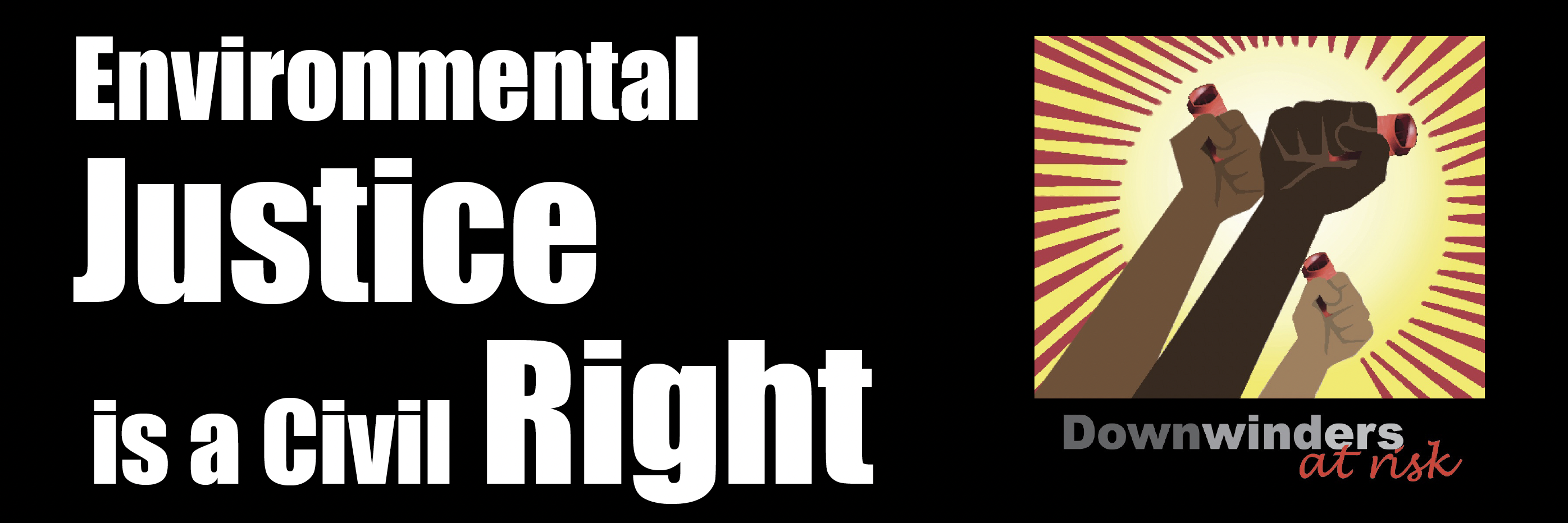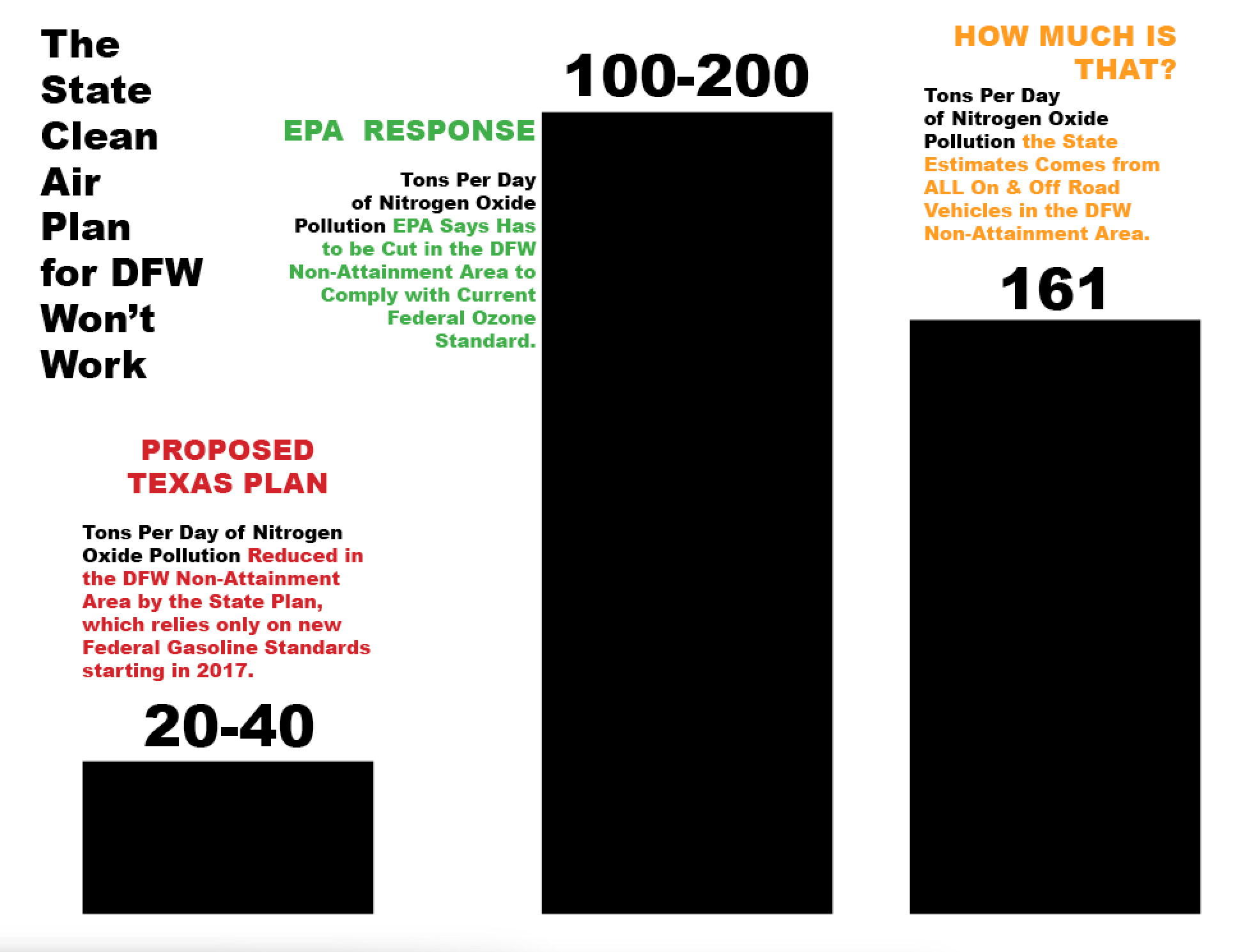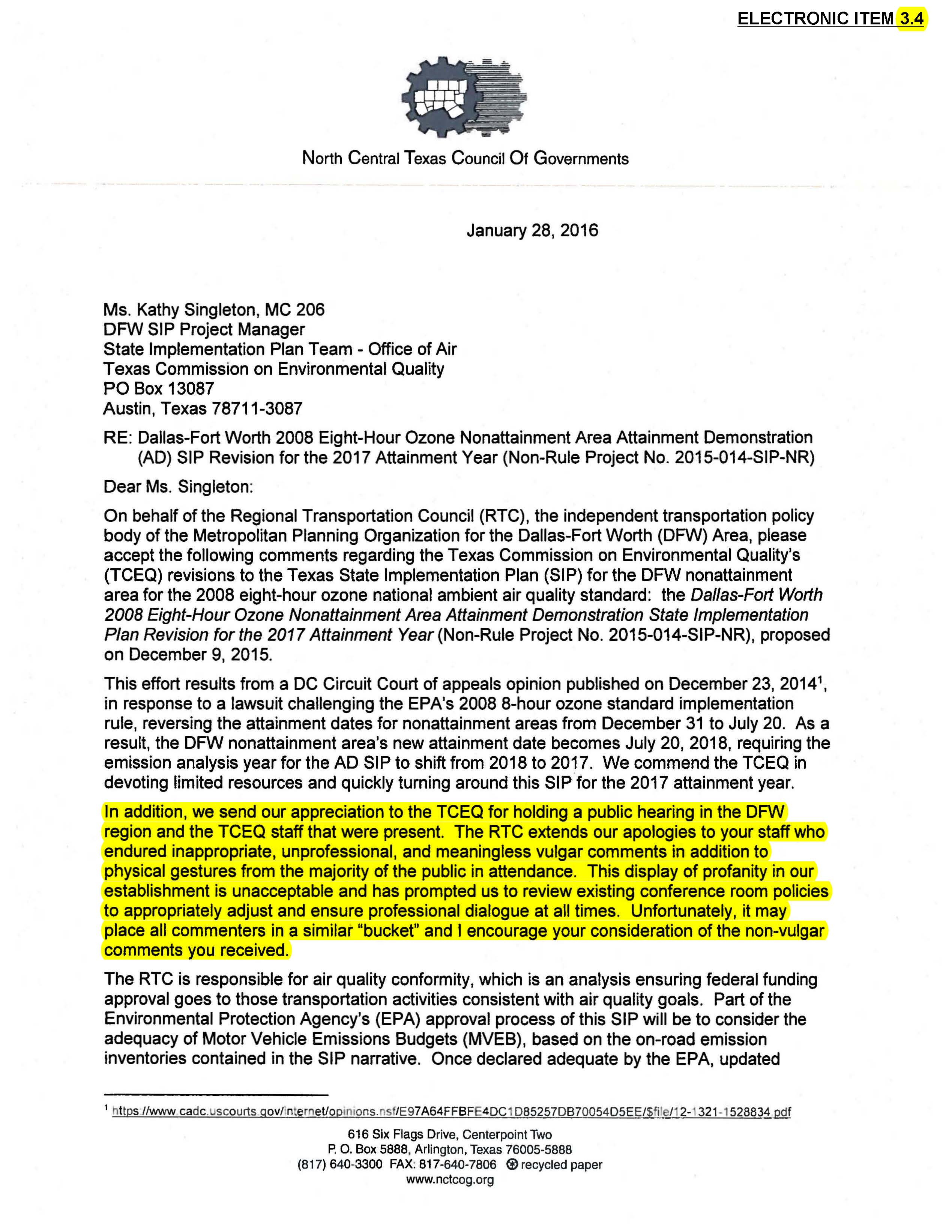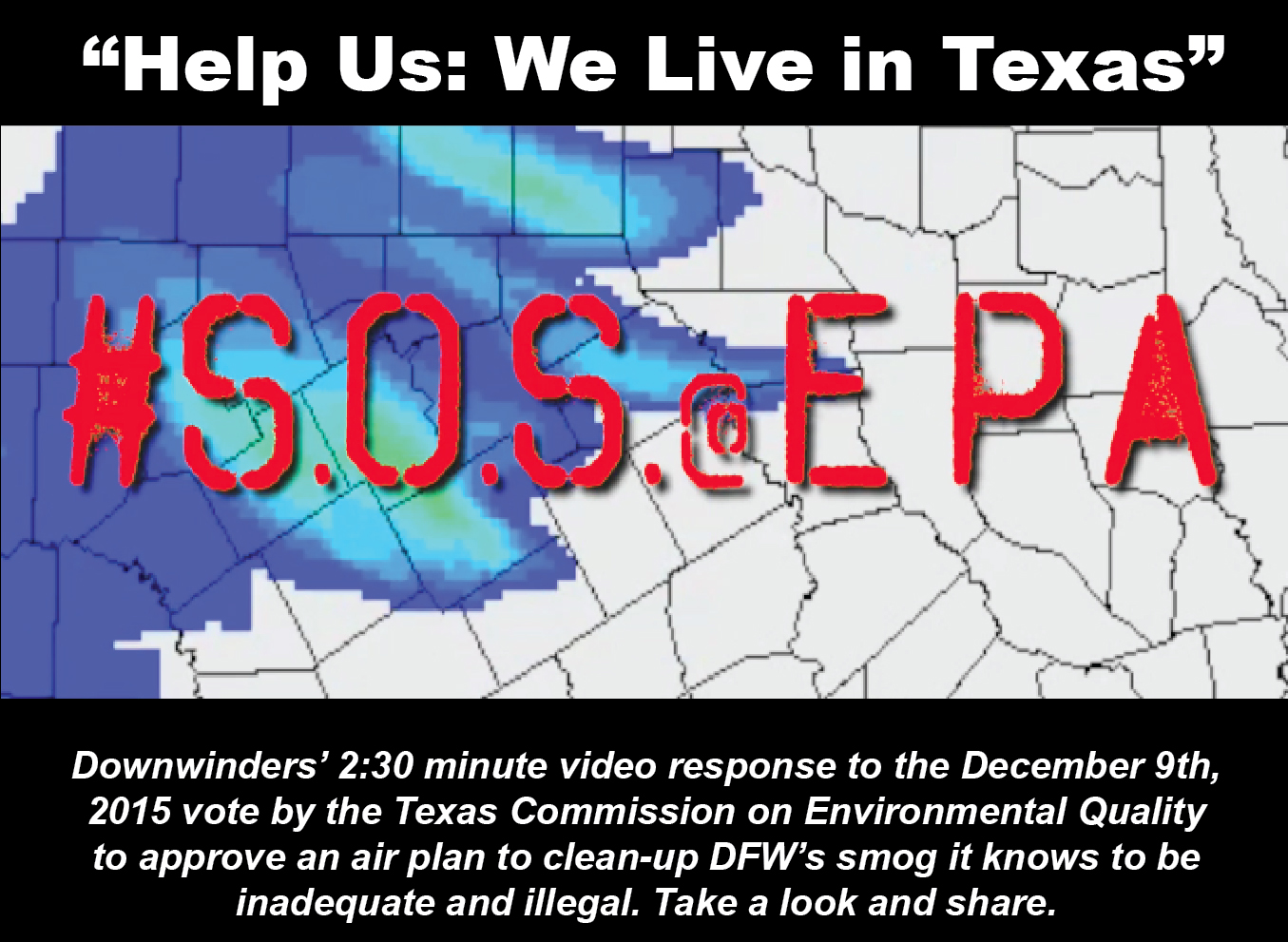Smog
Dallas County Votes to Reject State Air Plan, Asks EPA for Help
 By a vote of 3 to 2 this morning Dallas County became the first local government in DFW to take a stance rejecting the state-sponsored anti-smog plan for the area, and ask EPA for help in writing a new one that might actually produce cleaner air.
By a vote of 3 to 2 this morning Dallas County became the first local government in DFW to take a stance rejecting the state-sponsored anti-smog plan for the area, and ask EPA for help in writing a new one that might actually produce cleaner air.
At stake is the last comprehensive chance to address chronic smog in North Texas until the next decade.
Pct 1 Commissioner Dr. Theresa Daniel introduced the resolution. It garnered support from Dallas County Judge Clay Jenkins and Pct 4 Commissioner Elba Garcia.
One-by-one Judge Jenkins cited, and then shot down, arguments he said he'd heard from industry about East Texas jobs, electric grid reliability, and the "premature" nature of the vote, given that the state's plan doesn't officially arrive at the EPA's doorstep until July. He said he found none of these persuasive in light of the impact to public health and lost productivity from dirty air days in Dallas County cited in Dr. Robert Haley's landmark 2015 study on the costs of smog in DFW. And he saw no indication the state was planning to change anything in the plan prior to July's official submission.
Garcia was hopeful that the measure, although without the weight of law, would still be effective in getting the EPA to provide a more effective clean air plan.
Daniel cited the fact the area has continually been out of compliance with the Clean Air Act since 1991 despite five previous state air plans as evidence of something more being needed this time around. She also reminded the Court of the conclusions of the UNT's ozone study, based on the state's own computer air modeling, showing the East Texas coal plants to be the single biggest influence on DFW smog.
Commissioner John Wiley Price, facing federal corruption charges, gave perhaps the most puzzling and incoherent defense of dirty air ever heard inside a local governmental chamber. He seemed to be adopting the TCEQ party line in arguing that the coal plants weren't impacting DFW air and the Court's actions were "premature" – he latched on to Jenkins phrase like a drowning man to a floating log. But honestly, there weren't a lot of complete sentences to his explanation. Which is a shame, because when you talk about who pays the price for dirty air in Dallas County, a disproportional number of those casualties are Commissioner Price's constituents – people of color who make less than the median income. They need a strong advocate for clean air, not a rambling echo chamber for the failed status quo.
Commissioner Mike Cantrell, the lone Republican on the court, did not speak at all. Such is the state of the Texas Republican Party.
Dallas County's resolution now goes to EPA, will it will join a letter sent two weeks ago by Dallas area congressional representatives Eddie Bernice Johnson and Marc Veasey, which also requested EPA reject the state's plan and write one of its own if it has to.
Meanwhile, clean air advocates are fanning out and seeking appointments with representatives from other North Texas counties and cities to attempt to get as many similar resolutions as they can between now and the end of the year, when a final decision could be made by EPA to accept or reject the plan. They say the more local governments that pass them, the more likely it is EPA will feel it has the political support to intervene.
Because Dallas District 12 Councilwoman Sandy Greyson served with Commissioner Daniel on the same committee overseeing the UNT and Haley studies, it's probable Dallas City Hall will be one of the next front lines in this fight. Stay tuned.
Join Us for the First DFW Air Quality Vote of 2016
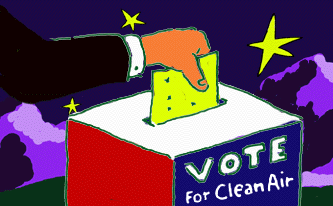 Dallas County Commissioners' vote on sending state air plan back to Austin:
Dallas County Commissioners' vote on sending state air plan back to Austin:
This Tuesday, May 3rd, 9 am 411 Elm Downtown Dallas
First air quality vote of 2016
Come help us thank local officials for standing up to the state
This next Tuesday, May 3rd, the Dallas County Commissioners Court will hold an historic vote.
Commissioners will be asked to go on record as the first local North Texas government urging the EPA to reject the currently proposed state air plan for DFW and replace it with a stronger one that actually cuts pollution.
Pct. 1 Commissioner Theresa Daniel is sponsoring a resolution that requests EPA to do two things:
"…to reject the proposed State Implementation Plan for DFW ozone pollution, and require a new federal DFW clean air plan that can meet or exceed the current 75 ppb federal ozone standard at all North Texas monitoring sites, and implement all reasonably available pollution controls as defined by the federal Clean Air Act.
and
"...regulate East Texas coal plants as if they were in the DFW non-attainment area, or include them in a larger non-attainment area for North Texas under rules governing the new federal 70 ppb ozone standard."
As the most populous county in the 10-County DFW "non-attainment area" for smog, Dallas carries a lot of political weight. Passing such a resolution would be an important signal to other local officials concerned about the two-decade plus chronic air pollution problem in the region.
Downwinders and other citizens groups have formed a new ad-hoc alliance to campaign for similar resolutions in other North Texas cities and counties as part of a broader effort of convincing EPA to replace another state "do-nothing" air plan with one of its own.
The DFW Clean Air Network, or DFW CAN, includes the Dallas Sierra Club, and the Sierra Club's Beyond Coal campaign,Public Citizen Texas, Mansfield Gas Well Awareness, Liveable Arlington, and Texas Campaign for the Environment.
It's important to recognize what a challenge Commissioner Daniel and others are facing in taking on Austin over this issue. They need to see your support for their brave stands. And all the Dallas County Commissioners need to be reminded how long we've had to breathe dirty air and why we're fed-up with the state's apathy.
We CAN win this vote.
We CAN make a difference.
We CAN breathe clean air.
Bring the East Texas Coal Plants into DFW’s Smog “Non-Attainment Area” and See How Long They Last……
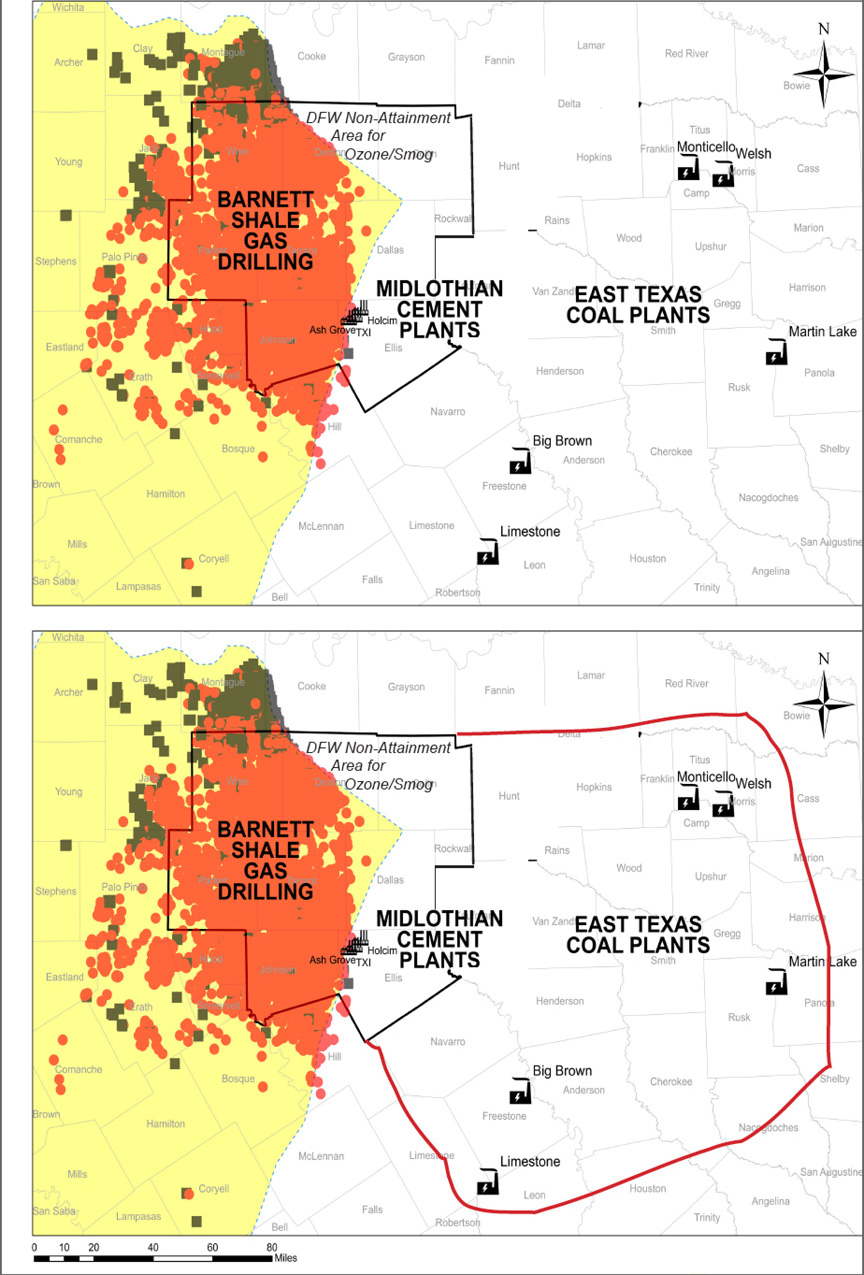 Want the Coal Plants to Face the Kind of Regulation
Want the Coal Plants to Face the Kind of Regulation
They've Been Avoiding for Decades?
Click here and send a formal comment letter demanding the coal plants
be included in the new DFW non-attainment area for smog.
Even as we're all waiting to see what EPA decides to do about the current Texas air plan for DFW under the current 75 ppb ozone standard, the regulatory process is gearing-up to administer the new 70 ppb standard.
One of the things which must be decided by the EPA are what geographical boundaries to use for the new standard when it comes to the DFW airshed and its chronic smog condition. Should they stick with the current 10-County configuration or should it be different and/or more inclusive?
The history of DFW's smog fight is a lengthy chronicle of bringing new counties into the fold despite official resistance. Originally, the DFW non-attainment area was only Tarrant, Dallas, Collin and Denton. Then Rockwall, Parker, and Johnson Counties came in because of their commuter traffic.
Downwinders had to petition the EPA to bring Ellis County and its cement industrial complex into the non-attainment area early in this century after being told repeatedly by state officials that its pollution had no impact on DFW air quality.
More recently, the state argued against the inclusion of Wise County, despite its huge inventory of oil and gas pollution, population of commuters, and more than likely, the highest ozone levels of anywhere in North Texas. EPA decided to bring it in anyway.
We're once again at a crossroads, and it could be the most significant one in a decade.
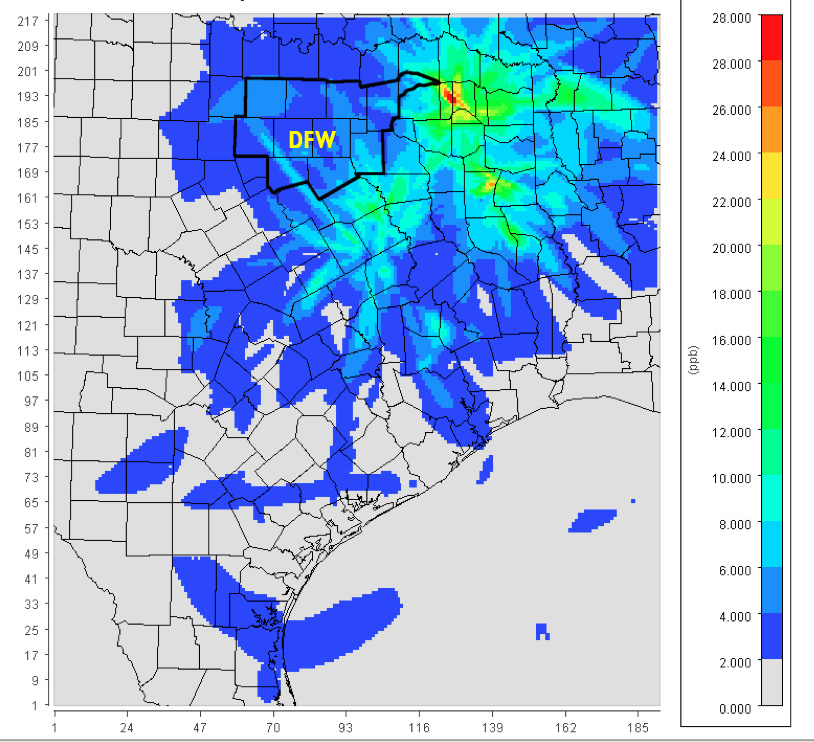 New evidence shows the huge impact the East Texas coal plants have on DFW air quality. Every scenario run by the UNT Engineering Department with the state's own DFW air computer model as part of Downwinder's Ozone Attainment Project demonstrates there's no more effective smog fighting strategy than reducing or eliminating the pollution from these coal plants.
New evidence shows the huge impact the East Texas coal plants have on DFW air quality. Every scenario run by the UNT Engineering Department with the state's own DFW air computer model as part of Downwinder's Ozone Attainment Project demonstrates there's no more effective smog fighting strategy than reducing or eliminating the pollution from these coal plants.
In fact, with a few other measures within the DFW area itself, controlling or eliminating their emissions could bring us in compliance with the 75 ppb standard, something that's not likely to happen otherwise.
Why is it so important to officially bring them into the DFW non-attainment area? Because major sources of pollution like coal plants are regulated differently inside than they are outside the area.
Right now, many DFW businesses are having to pay to operate and maintain pollution control equipment although most emit a tiny fraction of the pollution coming from the coal plants. That's because they're located in one of the ten counties in the DFW non-attainment area. They're held to a higher standard of control than their peers doing business outside those ten counties.
On the other hand, despite their large contribution to DFW's chronic ozone problem, the East Texas coal plants remain untouched by the same regulations and are not held to that higher standard. What sense does that make?
As much sense as it made to keep the cement plants out. As much sense as it made to try and exclude Wise County.
As per usual, the EPA is letting the state have first crack at defining a new DFW smog zone. The state has decided to leave the boundaries the way they are.
 Now, it's your turn to comment on that state decision, and tell Austin and the EPA – which will review the State's recommendations – what you think needs to happen.
Now, it's your turn to comment on that state decision, and tell Austin and the EPA – which will review the State's recommendations – what you think needs to happen.
The state is accepting comments on its decision until April 15th. This time, you can send your comments directly by e-mail instead of having to go through the official Texas Commission on Environmental Quality website
If you want to use our ready-to-send letter, all you have to do is CLICK HERE , sign the letter and add your own comments if you want. Then one more click and it's on it's way to Austin.
If you want to write your own comments:
EMAIL: kristin.patton@tceq.texas.gov
SNAIL MAIL: Kristin Patton, MC 206, State Implementation Plan Team, Office of Air, Texas Commission on Environmental Quality, P.O. Box 13087, Austin, Texas 78711-3087,
FAXED:(512) 239-6188.
All comments should reference "2015 Ozone NAAQS Designation Recommendations."
A Guide to the State’s War on the Clean Air Act
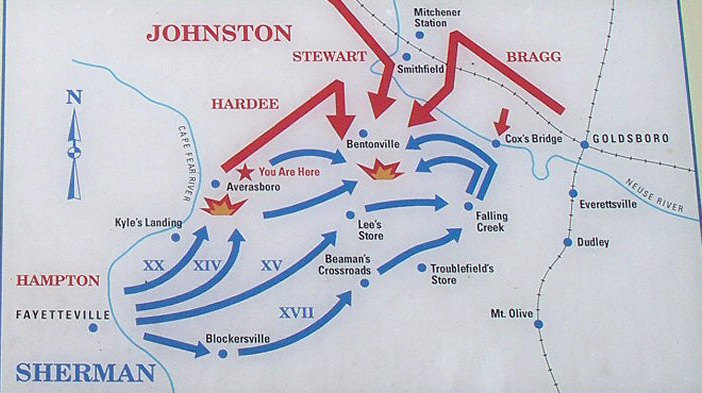 There's been a lot of activity lately on the many-fronted war the State of Texas is conducting against the Clean Air Act. What about a brief status report:
There's been a lot of activity lately on the many-fronted war the State of Texas is conducting against the Clean Air Act. What about a brief status report:
1) Mercury Rules
Thursday's headline was that Supreme Court Justice Roberts denied the attempt by Texas and 18 other states to delay the implementation of EPA's new, more protective limits on release of toxic Mercury pollution from coal plants. In 2013, three out of the top five largest Mercury polluters in the whole country were Texas coal plants.
It was only last summer that majority of the entire Court ruled EPA hadn't followed protocol in weighing costs to the coal industry versus public health benefits, and sent the standard back to the Agency to be rewritten. Not an especially big deal.
Texas, along with other states, sought an injunction from Justice Roberts to stop the timeline for implementation of the rules until the rewrite was finished. Roberts denied the request and so EPA is allowed to continue writing the rules and now expects to release the revised edition next month. One indication of how much trouble the rules are in, or not, is the speed and format of Robert's actions. He ruled on the case only a day after the EPA had submitted its brief, and ruled on it unilaterally, not bothering to convene the full Court.
The practical implications of the rules are reductions in the use of coal with higher Mercury content, better Particulate Matter pollution control equipment, and specific carbon absorption control technology aimed at Mercury. Many Texas coal plants have already taken steps to comply with the standards and it seems like almost all have applied for extensions to the original deadline.
2) Haze Rules
Earlier this week, Texas Attorney General Ken Paxton announced the state was suing the EPA for rejecting its lackadaisical plan to protect national parks from haze air pollution, also mostly coming from coal plants. Just three Luminant coal plants – Big Brown, Martin Lake and Monticello – release 40% of all Texas’ Sulfur Dioxide air pollution.
Late last year, EPA announced it found the state's lightning-fast 140-year plan to do absolutely nothing somehow inadequate, and begin to draft one of its own that would require "scrubbers" for Sulfur Dioxide pollution at nine coal plants across the state. It also concluded Texas had intentionally downplayed the impact of the coal plants on park air quality in computer modeling submitted to EPA .
Texas is suing to prevent the EPA from enforcing its plan to require scrubbers and asking the court to accept the original Texas plan as reasonable. Pending.
3) Sulfur Dioxide Non-attainment Areas in East Texas
In mid-February, EPA announced it intended to declare areas surrounding three East Texas coal plants as out of compliance with national Sulfur Dioxide pollution limits and declared them in official "non-attainment" of the Clean Air Act. Big Brown, Monticello, and Martin Lake power plants were found to be causing the violations in ambient air quality using computer modeling results first run by the Sierra Club, and then analyzed by the EPA. Boundaries were drawn for the new non-attainment areas that include all or parts of Freestone, Anderson, Rusk, Gregg, Panola, and Titus counties.
Final action by EPA on the non-attainment area classification is scheduled for this summer. Then it will be up to the state to submit a plan for action. We can all write the script from there. It ends in a court ruling.
Eventually, these East Texas non-attainment areas are another tool by EPA's to raise the costs of operating the oldest, most polluting coal plants to better reflect their toll on public health. Plants could lower their Sulfur Dioxide emissions by importing more "Cleaner Coal" from Wyoming and/or paying for those scrubbers the Haze Rules requires too.
4) DFW Clean Air Plan
DFW is in "non-attainment" for ozone, or smog pollution. It has been since 1991. The State has submitted a plan to EPA that sits back and watches federal fuel changes reduce smog-forming pollution by 20-40 tons per day. The problem? EPA estimates it will take cuts of 100-200 tons per day to get down to the current ozone standard of 75 parts per billion. The state says it sees no reason for more cuts.
This is the state plan up for comment at the the now infamous "F*** the TCEQ" public hearing in Arlington in late January, with final submission to EPA by the state this summer.
But between now and then one of the headlines you should see will be EPA rejecting the part of the state's plan dealing with pollution control technology. EPA has already telegraphed their intention to do so, and they don't have to wait for the state's final submittal deadline to act.
This will, of course, be followed by the state's suing the EPA for daring to enforce the Clean Air Act when Austin won't. But it won't keep the EPA from doing exactly what it did in the Haze Rule fight – write its own clean air plan for DFW.
And that will be our chance to make the greatest leap forward in local air quality in a decade.
How to Outflank HB40 in the Barnett Shale
 Last week, the EPA made an important admission.
Last week, the EPA made an important admission.
"Methane emissions from the oil and gas industry are significantly higher than previous official estimates, according to draft revisions of the U.S. greenhouse gas emissions inventory released Monday by the Environmental Protection Agency. At 9.3 million metric tons, revised estimates of 2013 emissions are 27% percent higher than the previous tally. Over a 20-year timeframe, those emissions have the same climate impact as over 200 coal-fired power plants."
This most recent analysis jives with other studies like the one from UTA/EDF that found Barnett Shale facilities leaking up to 50% more methane than previously estimated. In reaction to the information, EPA Chief Administrator Gina McCarthy was quoted as saying "we need to do more" to cut methane pollution.
In its last year in office the Obama administration is finally grasping that natural gas isn't the climate change wunderkind its promoters claimed and last week's announcement is the tacit admission they need to do more to crack down on oil and gas.
What has that got to do with DFW in 2016?
By Spring, the Regional office of the EPA is expected to announce that it has rejected the State's clean air plan for DFW in regard to its application of "Reasonably Available Control Technology." That means the state hasn't required the application of readily-available air pollution controls for major sources the way the Clean Air Act demands. Specifically, EPA staff have cited the failure of the state to lower the emission standards for the Midlothian cement kilns to reflect more modern technology. But it's not the only area where Texas fell short. There are no new pollution requirements for any oil and gas facilities in the state's plan either.
EPA rejection of the Technology section of the state's DFW air plan would mean the EPA would begin to draft its own clean air plan for the region. An EPA-drafted plan gives local citizens concerned about the health impacts of fracking an opportunity to persuade the Agency to use the plan to crack down on smog-forming Nitrogen Oxide (NOx) and Volatile Organic Compounds (VOCs) pollution in the Barnett Shale by requiring lower emission standards on all aspects of drilling and production.
While methane isn't considered a smog pollutant, it doesn't get emitted by itself. It comes out of a stack or valve, or leaks from a pipeline combined with smog-forming VOCs. So the more you control VOC pollution, the more you control methane pollution.
In light of last week's announcement, this gives EPA an extra incentive to go after VOC emissions in DFW even though the conventional wisdom is that it's combustion-generated Nitrogen Oxide pollution that really makes DFW smog so bad.
BTW, that conventional wisdom is under attack because the worst-performing air monitoring sites in North Texas are all in the Barnett Shale and heavily influenced by pollution from oil and gas facilities – both NOX and VOCs. It's possible to imagine a strategy to get smog numbers down in DFW solely by application of oil and gas emission regulations that can impact these important monitors – which drive the entire region's fate – even if the new regs have minimal impact on monitors elsewhere.
What kind of new regulations are we talking about?
* Start with the electrification of all 650 large natural gas compressors in the 10-county area.
* Do the same thing for all drilling rigs in the same 10-county area – nothing but electric.
* Emission standards for tanks and pipelines that reflect the latest leak-detection technology.
Inclusion of new EPA “Control Technique Guidelines" which are part of Agency's new methane rules. According to the Agency's release on the the new rules, “…reduction of VOC emissions will be very beneficial in areas where ozone levels approach or exceed the National Ambient Air Quality Standards for ozone."
Under the new rules, areas like DFW that host large concentrations of gas pollution sources and are officially categorized as “non-attainment” for smog receive "an analysis of the available, cost-effective technologies for controlling VOC emissions from covered oil and gas sources."
There's one more reason EPA has an incentive to go looking for all the cuts in oil and gas pollution it can find in the 10-county DFW non-attainment area: after the cement kilns, there's no other major sources the Agency can target locally.
Because while it has the authority in a federal clean air plan to regulate all pollution sources in that 10-county DFW non-Attainment area, the EPA can't write new emission standards for the East Texas coal plants located 100 miles outside of that 10-county area – even though those coal plants have more of an impact on North Texas smog than any other source of pollution. EPA (and us) can put pressure on the state to address these dinosaurs, but it can't touch them through a DFW air plan.
EPA staff has estimated it will take a cut of 100-200 TONS PER DAY in local smog-forming Nitrogen Oxide pollution for DFW reach the current 75 parts per billion smog standard. The State's "plan" – i.e. the federal gasoline fuel changes it relies on – only represents a 20-40 tons per day cut.
Where do the other 60 -160 tons a day in cuts come from?
To give you some idea of the size of that gap, the state estimates that all on and off road vehicles in the 10-county area will emit 161 tons per day of NOx in 2018.
State-of-the-art controls on all the cement plants might give you up to 15 tons a day. Electrification of the large compressors, another 15-16 tons per day eventually. After that it gets hard to find large volumes of cuts without the coal plants. And this is why the EPA should give cuts in VOC/methane a longer look than they have before – they're concentrated in the same areas where the region's worst-performing monitors are and they represent a huge source of climate change pollution that could also be another skin on the wall in addition to lowering smog levels.
There's no question the passage of HB40 has stymied grassroots progress toward more protective regulation of fracking by municipal governments in the Barnett Shale. It's thrown what was a fairly successful local movement into disarray. To date, there doesn't appear to be any consensus about strategies to combat the effects of the legislation.
But a way to outflank some of the impacts of HB 40 coming is coming down the pike, and it offers local fracktivists an opportunity to rally round a common, achievable goal – lowering emission levels across the board in the Barnett Shale. We can overlay a larger, stricter regional template for oil and gas regulation in place of 100 separate municipal ones.
What better way to nullify the efforts of the nullifiers in Austin?
COG’s Michael Morris Criticizes “Vulgar” Comments from Citizens, But Not a Vulgar Air Plan from TCEQ
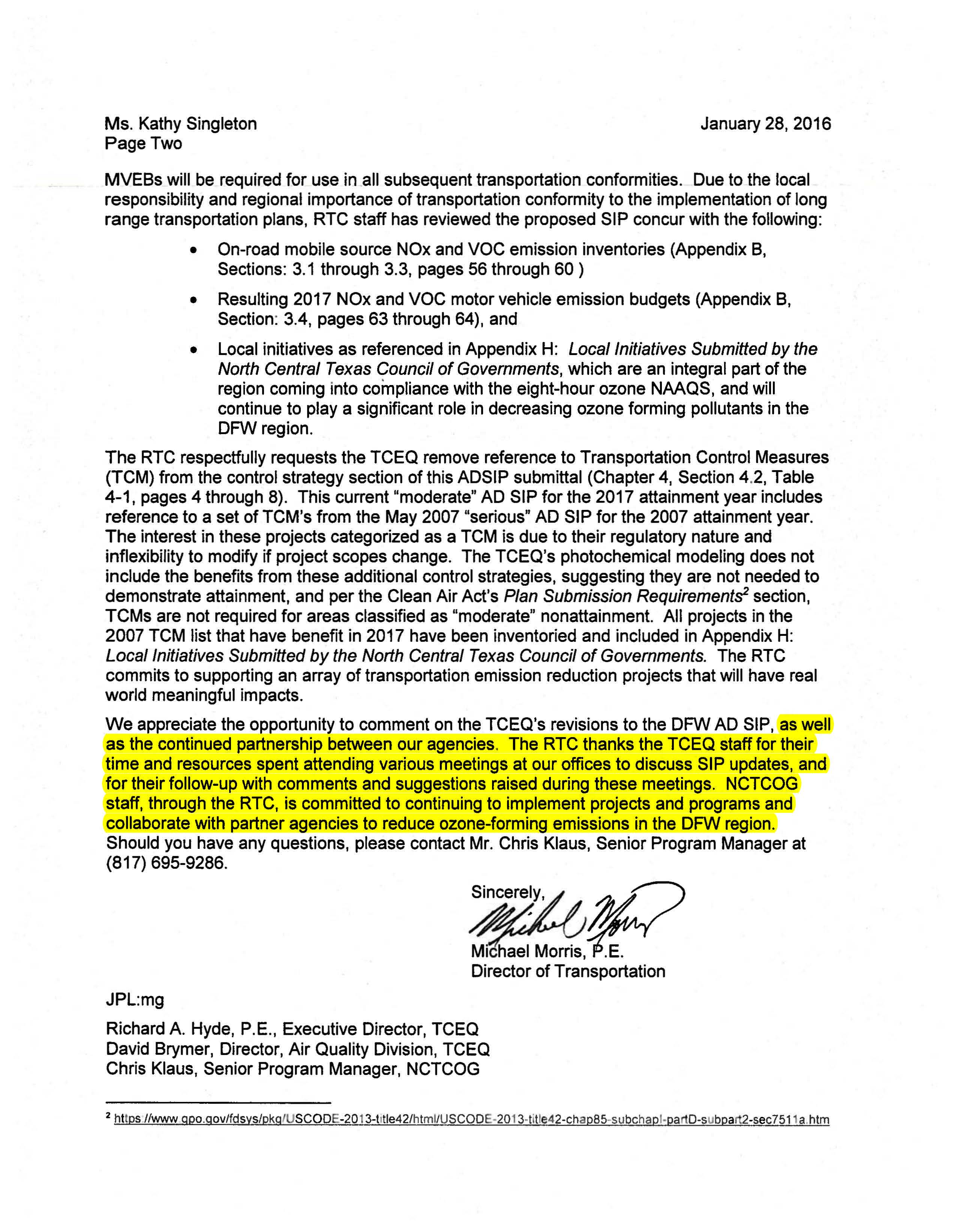 Don't look now, but Michael ("never met a freeway proposal I didn't like") Morris, the long-time Director of Transportation for the North Central Texas Council of Governments, has gotten a case of the Vapors.
Don't look now, but Michael ("never met a freeway proposal I didn't like") Morris, the long-time Director of Transportation for the North Central Texas Council of Governments, has gotten a case of the Vapors.
Was it some new threat to the Trinity Tollroad that sent Mr. Morris into a tizzy? Some "regional mobility" crisis?
No, nothing as small-minded as those examples.
Instead it's the "vulgar" language used by DFW residents in the state's public hearing on its new do-nothing air plan on January 21st that makes Mr Morris so darn mad he feels he has to apologize to the Texas Commission on Environmental Quality for it in a letter last month.
You see the hearing took place at NCTCOG headquarters in Arlington, in the COG conference room Mr. Morris uses to rule his freeway fiefdom from as the force behind the Regional Transportation Council.
We suspect that almost everyone official, including Mr. Morris, thought it would be another dreary affair when the conference room was offered up as a hearing space. But citizens had other ideas. After 20 years of failure, they weren't in any mood to accept another "plan" from the state that required no new pollution controls on any sources. They were mad as hell, and they weren't going to take it anymore.
No question more than one person uttered words and phrases you will not hear in Church. These were intentional and meant to shock everyone out of official complacency in another just-going-through-the-motions regulatory exercise. Commentators were following the advice of John Maynard Keynes: "Picturesque language, used right, serves an important purpose. Words ought to be a little wild, for they are the assaults of thoughts on the unthinking."
"Unthinking" is a generous way to describe the State's air plan.
Far from being "meaningless," as Morris' letter to the TCEQ asserts, the use of "bad words" at the hearing on the 21st was packed with decades of frustration. They meant something precisely because they had never been uttered before in such a place by people who had worked in good faith for so long on DFW's chronic smog problem. They meant something because citizens realize they no longer have anything to lose in calling out the State for its shamelessness. It meant something because the story that was told by employees the next day at TCEQ HQ in Austin and EPA HQ in Dallas was not the usual script for these things, but how badly the State got its ass kicked, and how genuinely angry the crowd was that nothing was being done about DFW bad air – again.
"Bad words" put an exclamation point on a problem. They can also unmask the Killing-Us-Softly language and protocol the TCEQ uses to make decisions that harm the public health. They pull back the curtain and give a more accurate, if less polite, perspective. If some citizens were dropping F-bombs toward the TCEQ at the hearing, they were only giving as good as they were getting.
Because make no mistake about it, in the way the State has drafted and approved this plan, it's making it's own bold declaration of F*** YOU to EPA and seven million DFW breathers.
By conservative estimates, the State's air plan for DFW needed to cut up to 200 tons per day or more of smog-forming pollution to get the the current ozone standard by the deadline of 2017. Instead the state is submitting a plan that gets only 20-40 tons per day of cuts – all from a change in federal gasoline rules. The EPA had already warned Texas in writing that the plan didn't include new, lower emission limits for the Midlothian cement kilns, and this exclusion would mean the plan was not meeting the Clean Air Act. The State submitted the same plan anyway.
But there was no criticism of this obscene gesture in Morris' letter. Instead he says he looks forward to working in continued partnership with the TCEQ – a partnership which has produced five (going on six) failed air plans and over twenty years of non-compliance with the Clean Air Act. Huzzah.
And that's why citizens were right to call out the TCEQ the way they did on the 21st. Here's an agency, COG, that's nominally, but officially assigned the role of local consultants on air planning for seven million DFW residents, and it's taking a complete whiff on the State's clear-eyed strategy of nullifying the Clean Air Act. If it can't even bring itself to mildly criticize the state for submitting a plan that's, you know, both unworkable and illegal, what other choice do citizens have but to scream bloody murder at the top of their lungs?
We're proud to have played a part in making DFW a hostile work environment for the political hacks who now run and staff the Texas Commission on Environmental Quality. They don't deserve to have an easy time of it. They should fear being run out on a rail or verbally tarred and feathered every time they make an appearance here. It's the only way citizens have to effectively show how they feel about a government that not only isn't listening, but has no interest in listening.
It's also activity protected by the First Amendment, a technicality that Morris seems like he's desperate to address for fear of his conference room being sullied by another severe outbreak of democracy.
And that's the thing about Morris' response. He's very concerned about the bad words. Not so much about the bad air.
You could put all the F-bombs dropped on the 21st on hundreds of billboards next to schools, and churches, and Mr. Morris' beloved freeways, where thousands would see and be offended by them. You could broadcast them over a loud speaker going through "nice" neighborhoods. You could open a website devoted to nothing but evangelizing their use or a cable channel that repeated them 24/7. You could assault people from every direction with bad words every waking minute of their day, and you'd still be doing less harm to the public than even one more month of dirty air courtesy of the state, and Mr. Morris's silence.
As for those citizens who were there on the 21st to give the start a hide tanning it deserved, maybe they were taking Jane Jacobs lesson to heart: "We had been ladies and gentlemen and only got pushed around."
When Was the Last Time you Saw This?
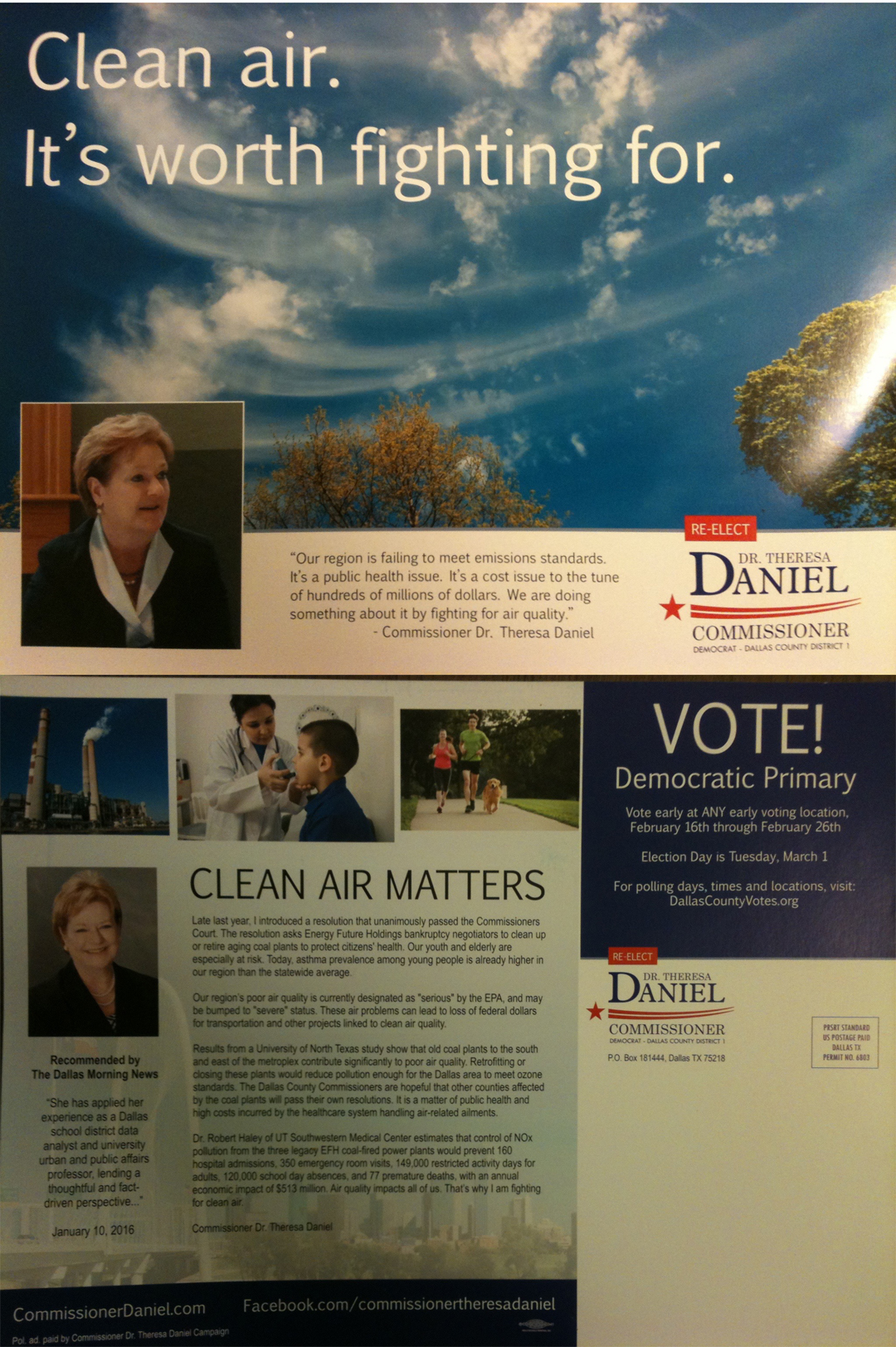 Can you even remember the last time you received a DFW political mailer that spoke about the value of air that won't make you sick or kill you, much less a whole piece devoted to the subject? Neither can we. That's what makes this mailer from incumbent Dallas County Commissioner Dr. Theresa Daniel so welcome.
Can you even remember the last time you received a DFW political mailer that spoke about the value of air that won't make you sick or kill you, much less a whole piece devoted to the subject? Neither can we. That's what makes this mailer from incumbent Dallas County Commissioner Dr. Theresa Daniel so welcome.
In an oversized 9 x11 mailer that went to 5 to 6000 households in District 1, under the headline, "Clean Air. It's Worth Fighting For," Daniel states, "Our region is failing to meet emissions standards. It's a public health issue. It's a cost issue to the tune of hundreds of millions of dollars. We are doing something about it by fighting for air quality."
On the back are four – count 'em – four paragraphs discussing the recent UNT local air quality study Downwinders sponsored, as well as Dr. Robert Haley's associated examination of the costs of dirty air, and the County Court resolution sponsored by Daniel last November asking the judge overseeing the Energy Future Holdings (Texas Utilities) bankruptcy case to clean-up the company's old East Texas lignite coal plants due to their large impact on DFW smog.
This pairing of issue to elected official is a consequence of Downwinders' Ozone Attainment Project, which produced the UNT study, but also put together a committee of local leaders to oversee it. Former Dallas County Judge Margaret Keliher chaired it. During her time in office about a decade ago, Keliher was the most influential local leader on air quality. She rode roughshod over what is now seen as the most effective clean air plan in DFW's two-decade old struggle to meet clean air standards – the one that came closest to working, however fleetingly. With her institutional knowledge of the issues and process, one of the co-benefits of Judge Keliher chairing our UNT study committee was being able to mentor a new generation of local elected officials on air quality.
Commissioner Daniel was one of the most active and vocal members of that committee. By her own admission, she didn't know a lot about air quality at the beginning, but she kept coming to the committee briefings and learning. Over the last year, she's become more confident in her understanding of the DFW dirty air narrative, to the point of now leading meetings with other officials.
Daniel and her fellow Project Committee member Dallas County Councilwoman Sandy Greyson have become a new dynamic duo for the cause of regional air quality. They represent a brand new wave of local leadership on the issue – one that has been sorely lacking even as DFW sunk deeper into chronic dirty air thanks to a state government that doesn't think smog is that big of a deal. You may remember that Greyson testified at the recent Arlington hearing on the State's do-nothing smog plan, and Daniel sent her Chief of Staff to speak. Had they not served on the Keliher/UNT Committee, it's likely neither would have even known about the event.
Even as they become more active, they're drawing more of their peers into the discussion – County Commissioners and City Council members in other parts of the "non-attainment area." For the first time in this decade, clean air has some serious advocates at the local level
Downwinders had a plan. We wanted to take away the state's exclusive power over the model that drives all the clean air decisions for the region and educate elected officials about the importance of winning the fight over chronic smog. We not only got an unprecedented study that used the State's own data to contradict it's conclusions about no new controls needed – we got at least two strong elected officials as new advocates for the cause that were in on that exercise from the beginning.
We didn't know Commissioner Daniel was going to send this mailer out, but it's one more beneficial side effect of grinding things out on a local level.
New Comments from EPA on DFW Air Plan: It Won’t Work
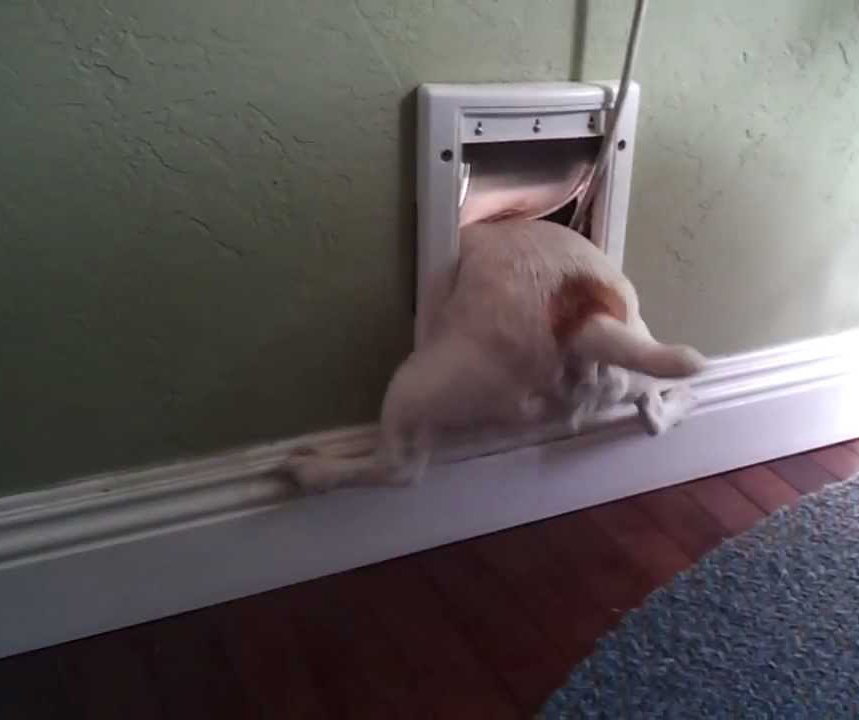 This plan won't work.
This plan won't work.
That's the simple message from the three pages of new comments Region 6 EPA staff submitted to the Texas Commission on Environmental Quality last month concerning its anti-smog plan for DFW.
That message begins with the cover letter, written by Mary Stanton, Chief of the State Implementation Plan Section for Region 6. "… additional local and regional ozone precursor emission reductions will be necessary to reach attainment by 2017."
How much in reductions? EPA estimates an additional 100-200 tons per day more in cuts of smog-forming pollution will be necessary to achieve compliance with the current 75 parts per billion ozone standard. "Without emission reductions on this scale, it is unlikely that the area will attain by the attainment date.”
To give you some idea of how large a number that is, TCEQ calculates that all gas and oil air pollution in DFW equals 78 tons per day, the Midlothian cement plants belch out over 18 tons per day, and all the power plants in the immediate DFW area, 21 tons per day. Totaled, those three sources add up to 117 tons of pollution a year.
All the cars and trucks on DFW roads are said to add up to 180 tons per day of pollution.
So the decrease in pollution EPA is saying is necessary to get down to the current ozone standard is huge.
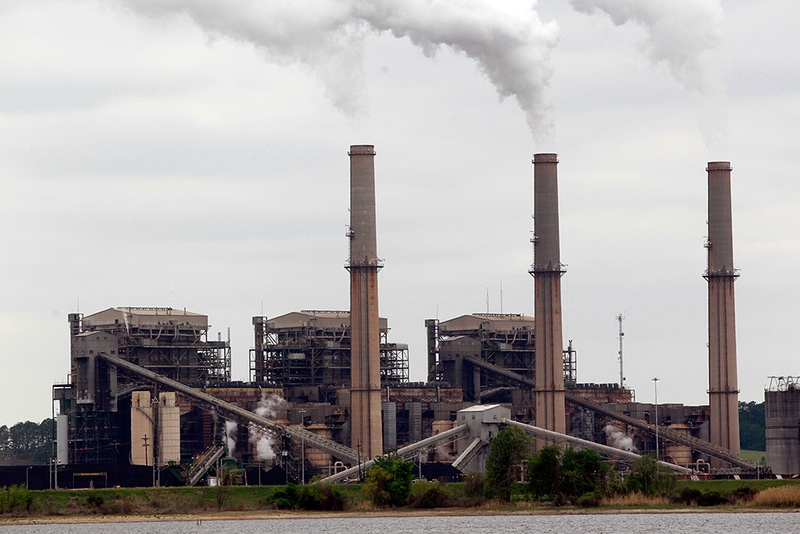
But take a look at those obsolete East Texas coal plants outside the boundaries the DFW nonattainment area. TCEQ says they account for a total of 146 tons per day. Add Selective Catalytic Reduction (SCR) which can get you up to 90% reductions in coal plant emissions, or close them down completely, add decreases from new controls on the cement kilns and oil and gas sources, and you're well on your way to amassing 200 tons a day of cuts in pollution.
Which do you think is more attractive to most DFW residents: permanently parking their cars, or putting new controls on the coal plants? Even though the coal plants harm the whole DFW airshed more than any other major source, they're not held accountable to the same regulatory requirements as sources closer to the center of the urban core, but which have less impact. Our cars must have special gasoline formulas in summer, we have to have HOV lanes, and we still go through Ozone Action Days, but the coal plants party like it's 1979. TCEQ is taking a hands-off approach to the plants and as a result the DFW region will continue to be in violation of the smog standard or huge cuts from other sources will be necessary.
TCEQ could have added new controls to the coal plants to the plan, but it chose not to. In fact, there are no new controls in the state's plan on any major sources of air pollution affecting DFW. EPA's new comments go to the heart of that choice. "Without additional emission reduction measures, we don’t see how the area will meet the standard of 75 ppb by the end of the 2017 ozone season," writes EPA staff.
EPA goes on to say TCEQ's computer modeling supporting it's do-nothing plan is "unrealistic," severely underestimating future smog levels, and delivering projections of decreases "that seem unlikely to be reached."
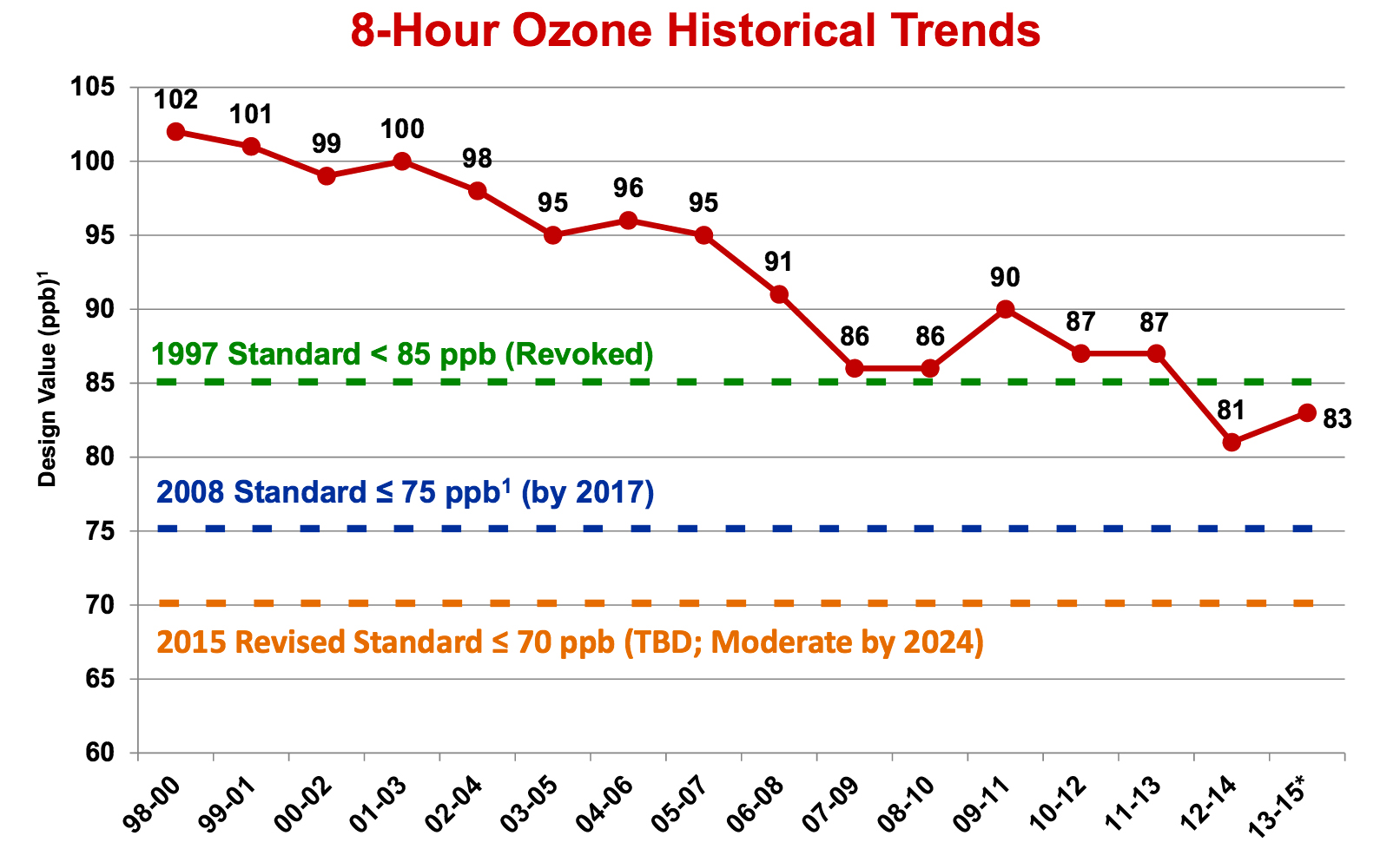 With this stance, EPA seems poised to reject this "attainment demonstration" part of the air plan as being insufficient. But it must wait to see how TCEQ responds to EPA comments about its modeling shortcomings and need for new cuts when the state officially submits its plan this July. Then, and ony then can the Agency approve or disapprove. We're going out on a limb here and predicting TCEQ won't change a thing, thus inviting EPA disapproval.
With this stance, EPA seems poised to reject this "attainment demonstration" part of the air plan as being insufficient. But it must wait to see how TCEQ responds to EPA comments about its modeling shortcomings and need for new cuts when the state officially submits its plan this July. Then, and ony then can the Agency approve or disapprove. We're going out on a limb here and predicting TCEQ won't change a thing, thus inviting EPA disapproval.
That's the pattern TCEQ has already established with its "screw you" response to the EPA's comments about the part of the plan dealing with "Reasonably Available Control Technology," or RACT, last February. This second part decides what new controls should be required of major sources of air pollution within the 10-County DFW "non-attainment" area – like the Midlothian cement plants and the thousands of oil and gas facilities checkerboarding the western half of the Metromess.
TCEQ says nothing new is required. EPA disagrees. EPA told TCEQ last year it had to do a new RACT review and lower the kiln's emission limits to account for a new generation of technology or it would have to reject the state's plan. TCEQ ignored the request, daring the EPA to disapprove. EPA seems more than willing to take them up on the offer.
And so while you're waiting for the state's computer modeling and suspect math to be rejected by EPA in July, you can probably expect to see EPA officially rejecting the RACT part of the state's plan sooner – maybe as soon as the next 60-90 days.
Despite the TCEQ going out of its way to submit an unacceptable plan to EPA, if the Agency pulls the trigger and begins a federal takeover of the DFW air plan, the Commission and the whole of Texas State Government will cry bloody murder about the usurpation of the state's authority and once again proclaim how "out of control" the EPA is on their way to filing suit.
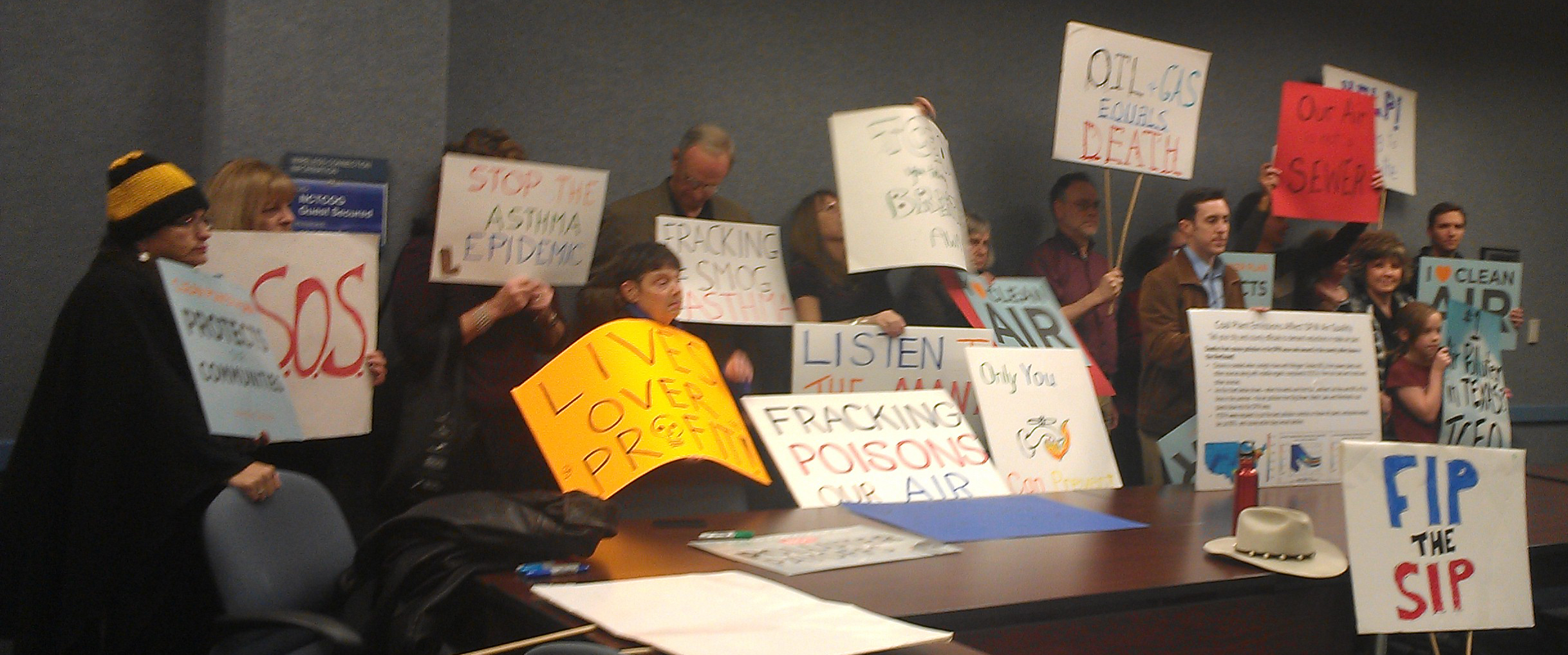 This is why the rowdy eruption of public sentiment for an EPA plan at the hearing in Arlington two weeks ago was so critical (Thank you again). It's also why we now have to be about the business of getting DFW local governments, hospitals and school districts to pass resolutions in favor of an EPA takeover. The Agency will need this kind of public support to counter all the criticism it will take from the Usual Suspects in Austin and DC. If you're interested in helping us pass one of these resolutions in your county, city, school or hospital district, please let us know at: downwindersatrisk@gmail.com
This is why the rowdy eruption of public sentiment for an EPA plan at the hearing in Arlington two weeks ago was so critical (Thank you again). It's also why we now have to be about the business of getting DFW local governments, hospitals and school districts to pass resolutions in favor of an EPA takeover. The Agency will need this kind of public support to counter all the criticism it will take from the Usual Suspects in Austin and DC. If you're interested in helping us pass one of these resolutions in your county, city, school or hospital district, please let us know at: downwindersatrisk@gmail.com
And as always, it's why you, and people you know should:
Thank You…for Kicking Serious State of Texas Butt Last Night
 Those were not your father's treehuggers that showed up in Arlington last night.
Those were not your father's treehuggers that showed up in Arlington last night.
Over 100 people, including 36 speakers over three hours, provided perhaps the angriest, and certainly the most profanity-laced evening of testimony ever heard in the two-decade history of state public hearings on DFW's dirty air. It's as if frustration over the last 20 years of State failures had finally found a cathartic, public release.
For the most part, speakers from communities across North Texas ignored the State and spoke directly to representatives of EPA, pleading for the Agency to take air quality planning out of the hands of a hostile Texas Commission on Environmental Quality.
But when many speakers did address the State's efforts, they didn't parse any words – at least any words that can be printed in a family newspaper, or this blog. For the first time anyone can recall, f-bombs were hurled at TCEQ over its failure to take North Texas bad air seriously. Dallasite Gary Stuard set the tone for the event early on by saying it was time for residents "to quit being so polite" about their systematic poisoning. His message was taken to heart by many of the speakers that followed.
Old, young, male, female, Black, White, Latino, mainstream group, neighborhood group, Elected officials, students, business owners, doctors, asthma suffers, parents of asthma suffers, people concerned about climate change, about fracking, about coal plant pollution, about cement kilns – it didn't matter. Not a single speaker spoke in favor of the State's plan of doing nothing about rising smog levels.
Seizing on the day's headlines, Lance Irwin from Mansfield was the first, but not last person to compare the official neglect over lead in Flint, Michigan's water supply to pollution in DFW's air supply. Arlington residents spoke – and in one instance, sung – movingly about fracking contamination making their neighborhoods unlivable. More than one testimony was dedicated to a friend or relative who'd died from a lung disease. Equal parts despair and anger.
By the time the final speakers finished, it felt more like a church revival. The Church of the Unredeemed State Agency. When was the last time you heard people say they had "fun" at a pro forma public hearing?
To be sure, more traditional voices and statements were in full force. Congresswoman Eddie Bernice Johnson sent a staff member urging the State to redo its plan. Dallas County Commissioner Theresa Daniel sent her aide to talk about the need to control coal plant pollution in the plan. Dallas City Councilwoman Sandy Greyson spoke for the need to grab this opportunity to make progress. Dr. Robert Haley of the Dallas County Medical Society and UT-SW did an excellent job of summarizing his recent study on the public health and economic costs of DFW smog and speaking to the Texas Medical Society resolution against the state plan. Rita Vinson, newly elected President of the Fort Worth League of Neighborhood Associations read a unanimous resolution passed by her group only the day before, calling for EPA to reject the plan. Lots of speakers recounted the long and winding road leading up to the current fact that DFW now has worse smog than Houston.
But it was the tossing aside of business meeting protocol and the pretense that the State had any interest in being there that made this a milestone event. Veterans of past hearings talked about how tired they were of repeating themselves. Newcomers couldn't understand how a State government that doesn't think smog is bad for you can write an effective anti-smog plan. Dentonites were rightfully resentful of seeing a plan that does nothing about smog from oil and gas sources being promoted by the same government that stole its municipal rights to regulate it themselves. Coarseness in language reflected rawness of feelings over yet another Texas attempt to undermine the EPA.
Although the weather was nasty, the major obstacle organizers faced yesterday was understandable skepticism about what good it would do to go to another useless TCEQ hearing. The answer was the need to provide EPA with political support to prepare for a federal takeover. That happened. Big Time. For three solid hours.
Thank you to everyone who participated in the worst public ass-kicking the TCEQ has ever received in DFW.

Now what?
EPA sent three staff members, including those in charge of reviewing and commenting on the State plan. They took notes. We'll get to see what the Agency thinks about this "new" plan within the next three weeks after the comment period closes and its written review becomes part of the public record.
After that, it should be a relatively short time before EPA decides to officially reject the part of the plan dealing with new controls in the 10-County "non-attainment area" – the part the State didn't do even after EPA asked TCEQ to, and explicitly told the Commission it would reject the plan unless it did.
It will take EPA longer, perhaps until the end of the year, to make a decision about the rest of the plan – the part that relies on computer modeling and estimates of future pollution. It's more technically oriented and there's more nuance than the up or down legal opinion with the control section.
And for citizens?
Send an email to EPA urging them to reject the State's awful air plan for DFW
Sign the CHANGE.ORG petition urging EPA to reject the State's plan
Forward our two-and-a-half minute video to people you know are concerned about air quality – or should be.
Submit written comments on this plan to the TCEQ:
Please reference: "Dallas-Fort Worth Attainment Demonstration for the 2008 Eight-Hour Ozone Nonattainment Area, Project Number 2015-014-SIP-NR"
via the interwebs:
http://www1.tceq.texas.gov/rules/ecomments
or fax
(512) 239-6188
Or by snail mail:
Kathy Singleton,
MC 206,
Air Quality Division, TCEQ
P.O. Box 13087
Austin, Texas 78711-3087
And get ready to campaign for resolutions supporting an EPA clean air plan for DFW from your local city council, county government, hospital districts, and school boards. We're all about building support for a federal takeover of our air quality planning between now and the end of the year when EPA is expected to make its final decision. We're coming to a governmental entity near you!
Lots is at stake. We can win the largest improvement in DFW air quality in a decade or wait another five years to try. Thursday night's showing makes clear many of us aren't willing to wait.
Onward Thru the Smog.
The First DFW “Clean Air” Plan Rejected by Doctors
 Public Hearing
Public Hearing
6:30 pm Thursday
January 21st
616 Six Flags Drive Arlington (near I-30 and Hwy 360 – map)
– First come, first serve to speak (no reserved time)
– 3-5 minutes speaking time
– Talking Points here if you need them
– NEW! Sierra Club Event at 6 pm out front
How bad is the new State of Texas "clean air" plan for DFW?
So bad the Texas Medical Association passed a resolution to reject it.
That's the Texas. Medical. Association.
As far as we know, this is the first time the state's premier medical association has expressed a formal opinion about any state air plan.
They oppose the State's plan because it contains no new controls on any sources of pollution contributing to North Texas' chronic smog problem. Not a one. At a time when DFW smog levels are going up.
They oppose the State's plan because it allows dirty air in North Texas to keep killing people and making them sick, costi us $650 million every year. Human and financial costs which are completely preventable.
Join the TMA in taking a public stand.
Residents of Texas who want clean air have to speak-up to counter our State officials who ridicule the idea.
Come to the hearing on Thursday evening and tell the State why you don't trust them with your health. Urge the EPA to reject Austin's plan and write its own.
What the Docs Say:
Some of the harshest critics of the State's proposed do-nothing DFW air plan aren't members of any environmental group. They're doctors.
At its 2015 convention in November, the Texas Medical Association endorsed a resolution urging the Association to:
"…reject the Texas Commission on Environmental Quality's (TCEQ's) 2015 State Implementation Plan (SIP) report and advocate for development of a new SIP report that conforms to the scientific, peer reviewed modeling methods developed by UT Southwestern and University of North Texas experts. TMA advocates for implementing reasonably available control measures at the state level capable of meeting national ozone standards, based on the UTSW and UNT validated models."
The resolution was the work of a delegation from the Dallas County Medical Society, headed up by Dr. Robert Haley, Epidemiologist at UT-Southwestern.
It was Haley who worked on a landmark study on local impacts of ozone that was released in tandem with Downwinder's own UNT computer air modeling study last fall. Those are the UTSW and UNT studies referenced in the TMA resolution.
Dr. Haley took the EPA's own software for estimating the health and economic costs of bad air, and applied it to DFW. What did he find?
Reducing smog by just 5 parts per billion in North Texas would:
1. Prevent 200 admissions to hospitals for respiratory illness every year
2. Prevent 400 ER visits to hospitals for respiratory illness every year
3. Prevent 140,000 lost school days every year
4. Prevent 100 premature deaths every year
5. Save $650 million a year in lost productivity
As it so happens, the most cost-effective path to lowering ozone levels across the region has been mapped out by the UNT study, which cloned the State's own computer model for DFW and ran the "what ifs" Austin isn't interested in asking anymore.
Applying off-the-shelf technology to East Texas coal plants, Midlothian cement kilns, and oil and gas facilities was shown by the UNT study to be the easiest ways to get smog levels down enough to comply with the current federal ozone standard. That's the "reasonably available control" part of the TMA resolution.
The State knows all this but refuses to include these controls in any DFW air plan – for the second time in 5 years.
Dr. Jim Walton, President of the Dallas County Medical Society took on that official stubbornness in a full-page editorial running in the group's newsletter:
"…once again TCEQ staff has announced that it sees no need to require new control measures on any major pollution sources, even while the Commission's own computer air modeling shows that DFW will remain above the 75 ppb standard….DFW is a chronic Clean Air Act violator, and much of it is avoidable. We can and should lead in this very practical and real issue that continues to threaten the health of our community."
And doctors are leading on this issue.
Despite the Dallas County Medical Society hosting its annual dinner on Thursday evening, Dr. Haley has said he'll join us in Arlington for the air plan hearing because of its importance. Come and thank him in person by adding your voice in urging EPA to take over the region's air plan.
Fight Back.
Don't Let Gregg Abbott Speak For You on This Important Issue.
Thursday, January 21st
6:30 pm
616 Six Flags Road in Arlington
First Floor Meeting Room
THE CASE FOR EPA TAKEOVER OF DFW AIR PLAN
Sign the CHANGE.ORG petition to EPA urging the Agency to reject the State's plan.
